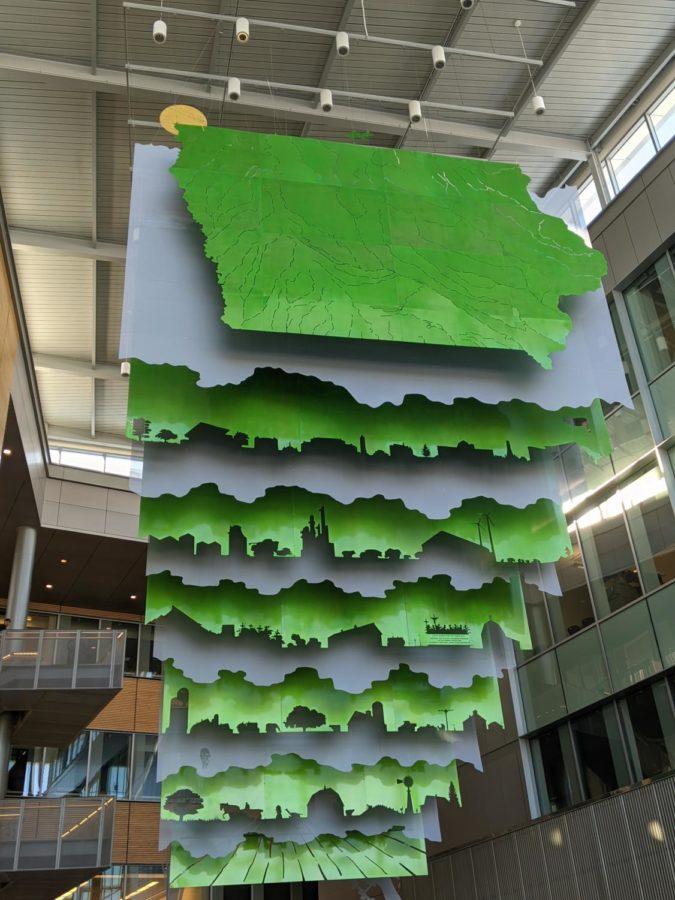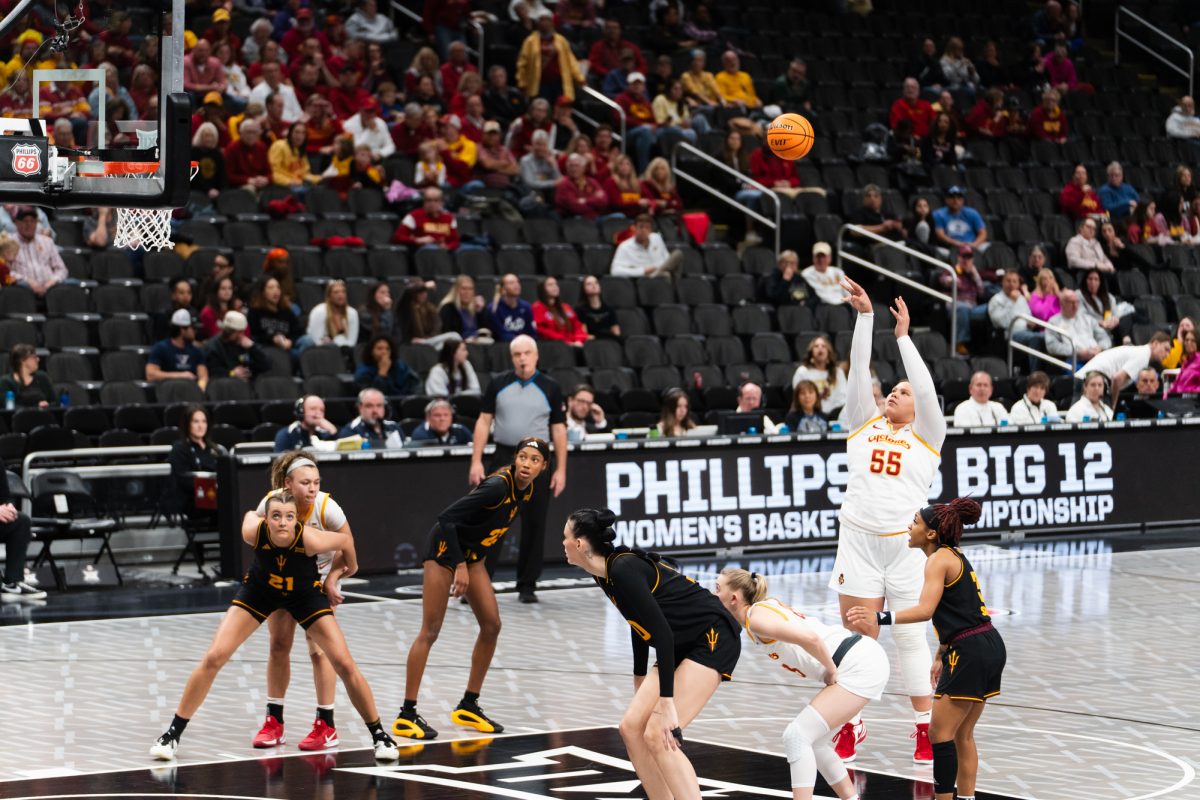Community members take an in depth look at “Floating World” during art walk
Ralph Helmick’s Floating World, 2014, pictured from its eastern face.
January 26, 2022
Iowa State faculty, students and members of the public gathered in Sukup Atrium to observe “Floating World”. The gathering was a part of University Museum’s Art Walks, which offer the public in depth looks into the public art across campus.
The Art Walk began at 12:00 p.m. in Sukup Atrium, the group of art admirers mostly consisted of faculty and members of the public north of the age of 40 but also one student.
Leading the art walk was Lynette Pohlman, the director and chief curator of University Museums. She began the art walk by explaining the importance of visual literacy and the history surrounding Iowa State and their commitment to arts and humanities.
“In 1927 A man came to campus to be our next president, or a future president named Raymond Hughes. He was a chemist, but he believed in the arts when he got here in 1927, the first thing he did was form the campus art committee,” Pohlman said. “God I love presidents like that.”
Since the creation of the campus art committee Iowa State has built up a large collection of over 2700 public works of art. From portraits of landscapes to the four-ton assembly of laser cut steel suspended in Sukup Atrium, Iowa State’s commitment to providing public art reinforces the beautiful aesthetic of campus.
Pohlman explained how the concept of “Floating World” was intricately planned out by a committee. 18 individuals were included in the committee, including Faculty such as Wendy Wintersteen and David Giles, as well as select students. The committee’s final product was an eight-page document detailing the desired outcome of the project.
“Basically, in a nutshell, it’s to talk about the history of agriculture and the influence of technology and cultural changes in the last 150 years, since we’ve had central campus,” said Pohlman.
Once the committee had decided on everything, they wanted the artwork to say, they embarked on the task of finding an accomplished artist with a history of creating pieces for the public.
Pohlman went on to explain the intricate symbolism and meaning behind the work of art, analyzing it both as a whole and within the individual panels, pointing out details like a portrait of Brownlee Davidson subtly etched into one of the lavender gray panels, or the original John Deere Sod Busting Plow depicted on one of the lowest levels of the work.
Throughout the Art Walk Pohlman made sure to ask questions and keep her audience thinking and involved. At one point a member of Pohlman’s audience, Kevin Marken of Des Moines, remarked that he would have appreciated the work more if it had been a product of an individual artist’s expression rather than something manufactured by a committee.
What ensued was a polite discourse on the merits of public art and the intrinsic value of expression on individual and larger scales. After the art walk Marken continued the conversation saying “Well, from an art standpoint, kind of like musicians. I just think of music as being music instead of, you know being the committee that made it.”
Bryon Dudley of Ames, who stood nearby chimed in saying “it’s purposeful art, so it has to fulfill that purpose and a lot of art you know, if you just have the crazy genius artists kind of person that just makes whatever they want to make, they’re not thinking about a purpose sometimes.”
At the end of the day Helmick’s work reflects on the history of an institution he had little to do with, so the committee behind the “Floating World” was necessary to adequately reflect Iowa State’s history. Yet the merits of an individual perspective are not disregarded, rather they make up the smaller pieces within the larger idea.







